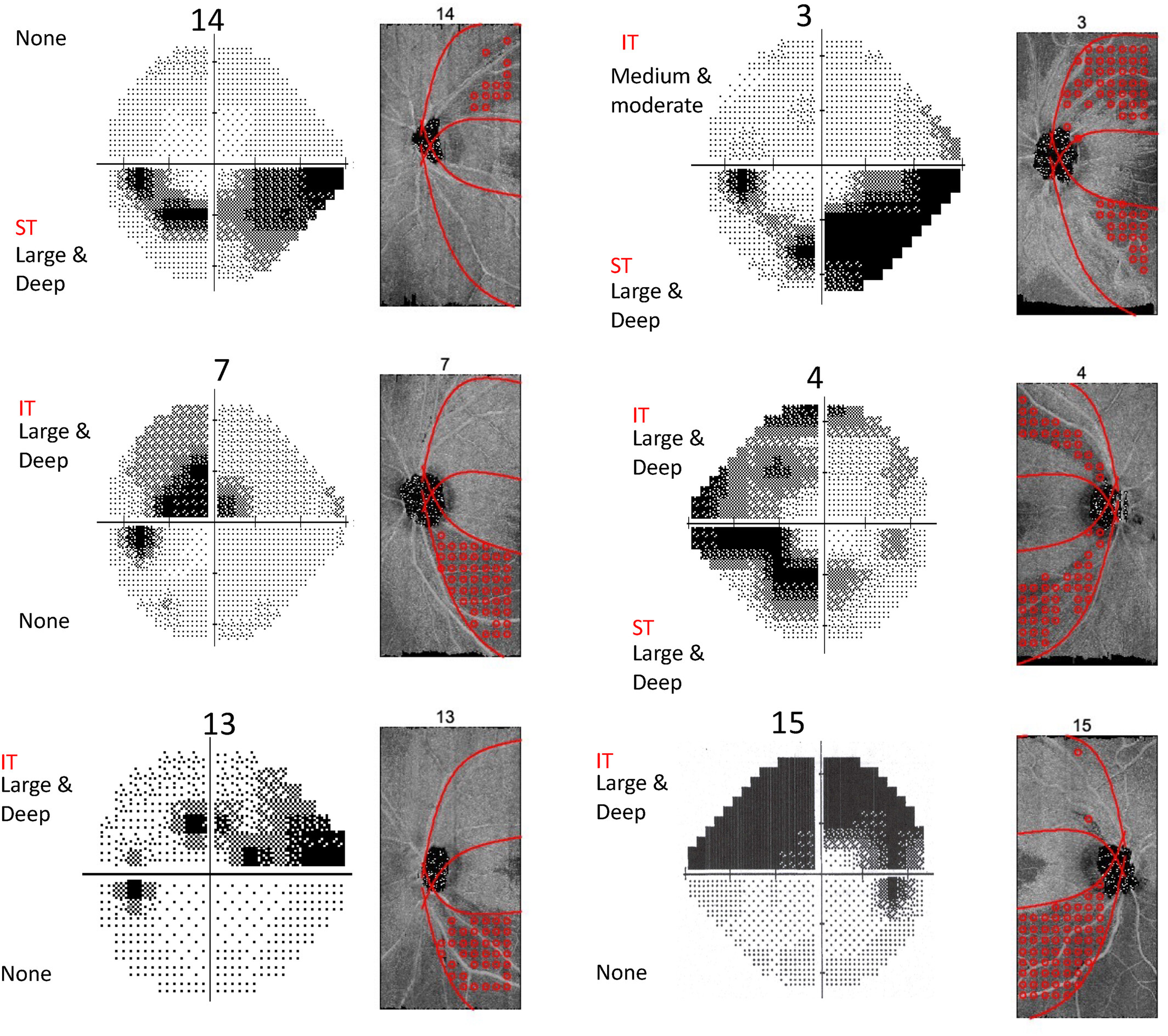 |
|
RNFL reflectance images may have potential for use in screening to identify patients most at risk for blindness from undetected glaucoma because of good agreement with perimetry on the location of deep perimetric damage. In this image from the study, anatomical features of RNFL loss (shown in red) correlated with visual field defects. Photo: Swanson WH, et al. Ophthalmic Physiol Opt. February 6, 2024. Click image to enlarge. |
When screening for glaucoma, a big issue is that many people already have severe perimetric defects when first diagnosed. In a new study, researchers developed criteria to predict visual field loss based on a concept called retinal nerve fiber layer (RNFL) reflectance, and found that en face maps of RNFL reflectance near the optic disc yielded high specificity and sensitivity for identifying hemifields with deep glaucomatous perimetric defects.
The analysis was carried out in four stages, using three groups of patients—30, 33 and 62 participants—with glaucoma and age-similar controls. The first stage used Group 1 to develop a criterion for RNFL reflectance images at 24μm, 36μm or 48μm below the inner limiting membrane (ILM). The second stage evaluated the criterion using Group 2. The third stage developed a second criterion to improve performance for Groups 1 and 2 combined. The fourth stage evaluated the second criterion with Group 3. Confidence intervals for sensitivity and specificity were then computed by combining results from all three groups.
The first criterion identified all hemifields with deep defects and no hemifields from controls, using a within-eye reference for healthy RNFL. For Group 2, specificity remained high but sensitivity was reduced. The second criterion improved sensitivity by using location-specific reference values. For Group 3, sensitivity remained high but reduced specificity was found.
“Quantification analysis of en face maps of retinal nerve fiber reflectance near the optic disc yielded high specificity and sensitivity for identifying hemifields with deep glaucomatous perimetric defects,” the authors explained in their publication on the research. “The study shows that reflectance maps may provide a way to perform mass screenings to detect those undiagnosed patients at greatest risk of severe visual impairment.”
The authors developed two criteria to identify patients with deep perimetric defects with high specificity and sensitivity. “Several improvements are warranted: automated identification of the fovea-disc angle and optic disc locations, evaluation of normal variation in patterns of RNFL thickness, improved segmentation of ILM and major vasculature, reduction of within-eye variability in RNFL reflectance of healthy eyes, assessment of effects of image quality, assessment of effects of comorbidity and effectiveness of other devices,” they wrote.
The best performance was a criterion that used as a reference value at each location the attenuation coefficient at a depth of 24μm below the ILM. When the attenuation coefficient at 48μm below the ILM was lower than this reference value, this was an indication of an RNFL defect. When the attenuation coefficient decreased from 24μm to 48μm, this could be due to the RNFL either being thinner than 48μm or becoming less directionally reflective below 48μm, the authors explained.
The authors noted that a number of challenges need to be addressed, with additional studies in small groups before performing an evaluation study in a community setting. “This warrants more thorough investigations in small groups to develop methods that could be implemented in screening of large groups.”
Swanson WH, King BJ, Alluwimi MS, Malik R. Predicting perimetric defects from en face maps of retinal nerve fiber layer reflectance. Ophthalmic Physiol Opt. February 6, 2024. [Epub ahead of print.] |

